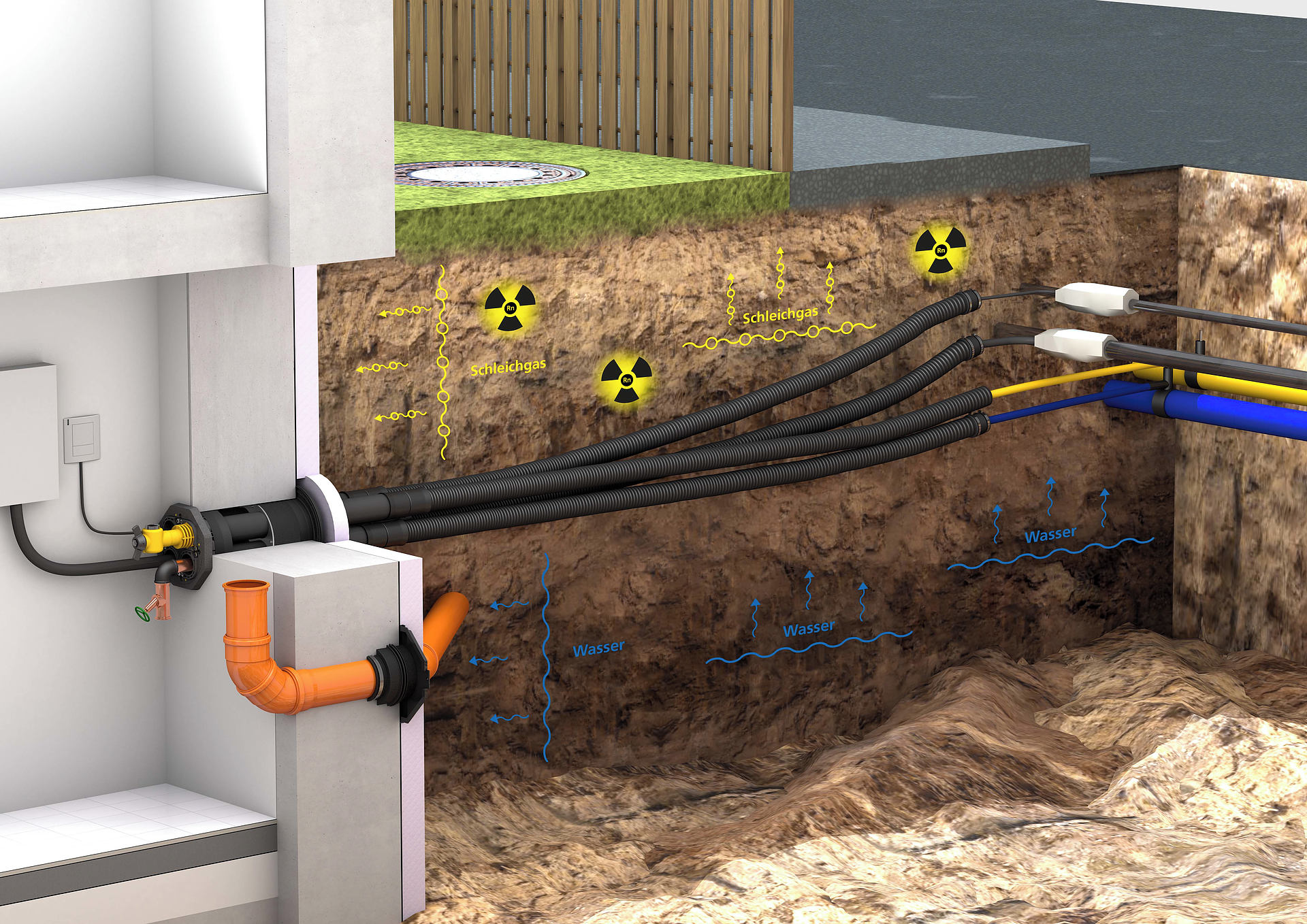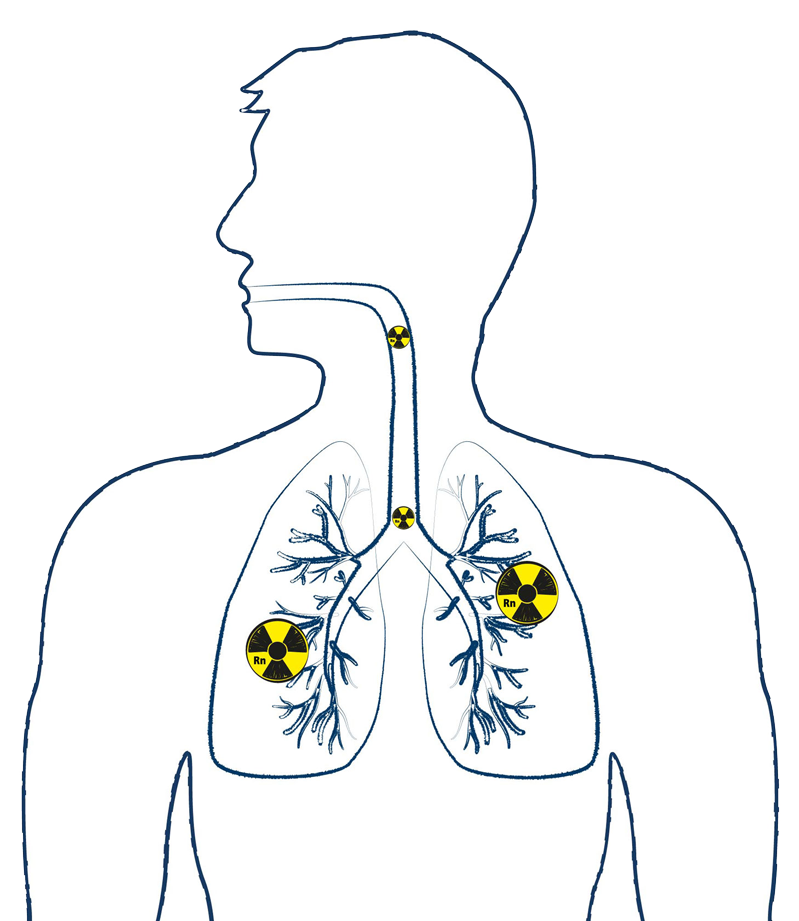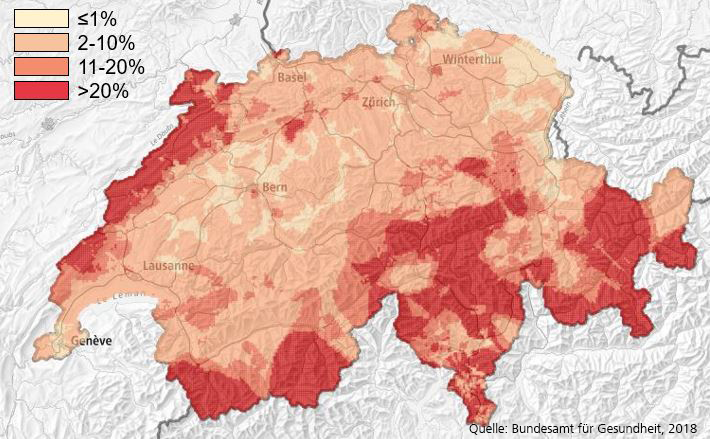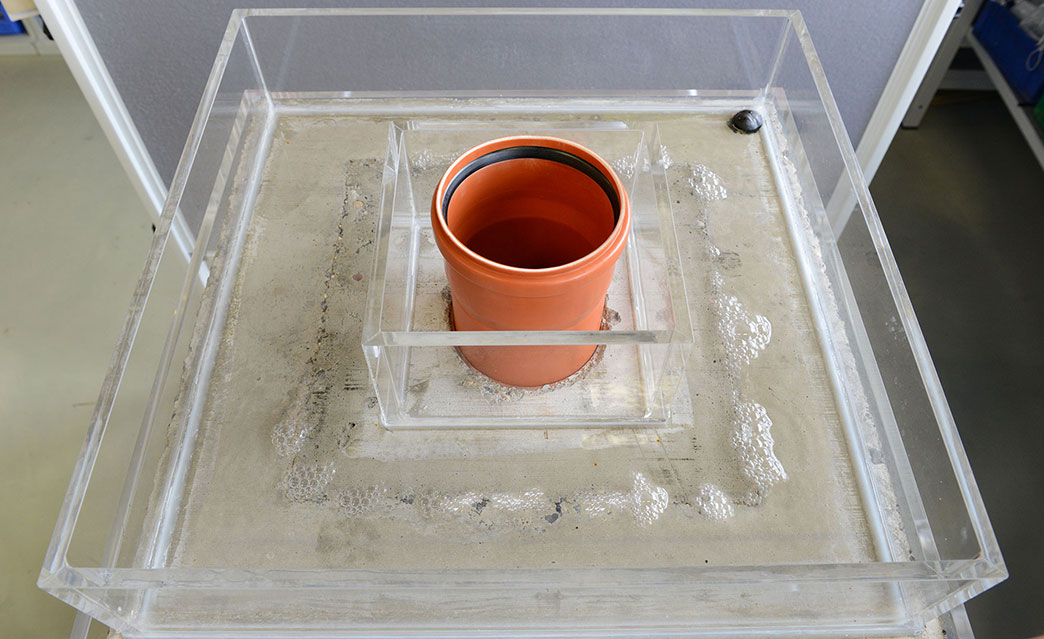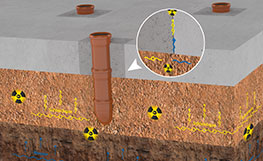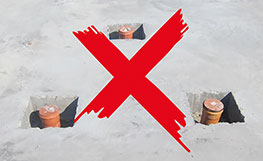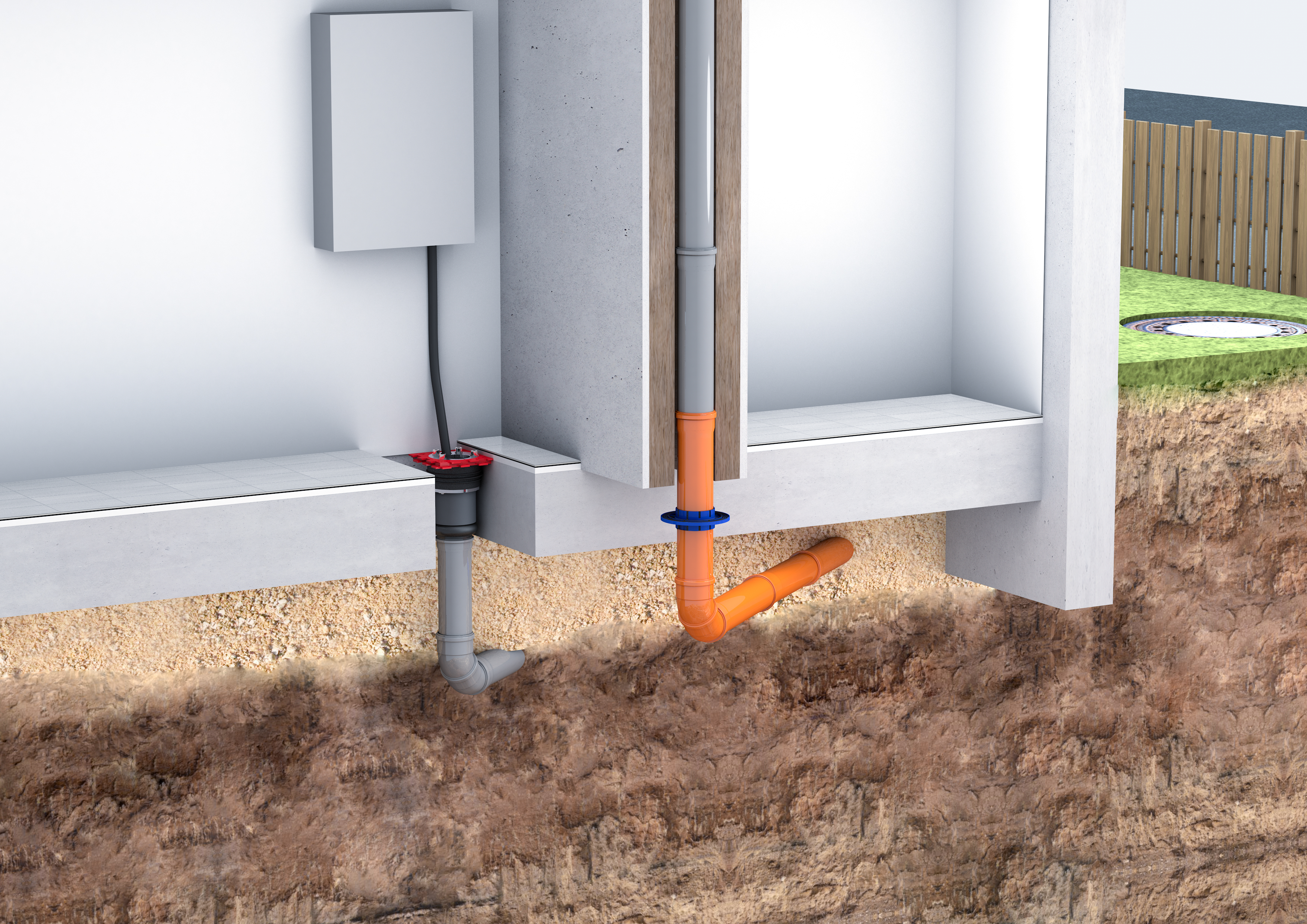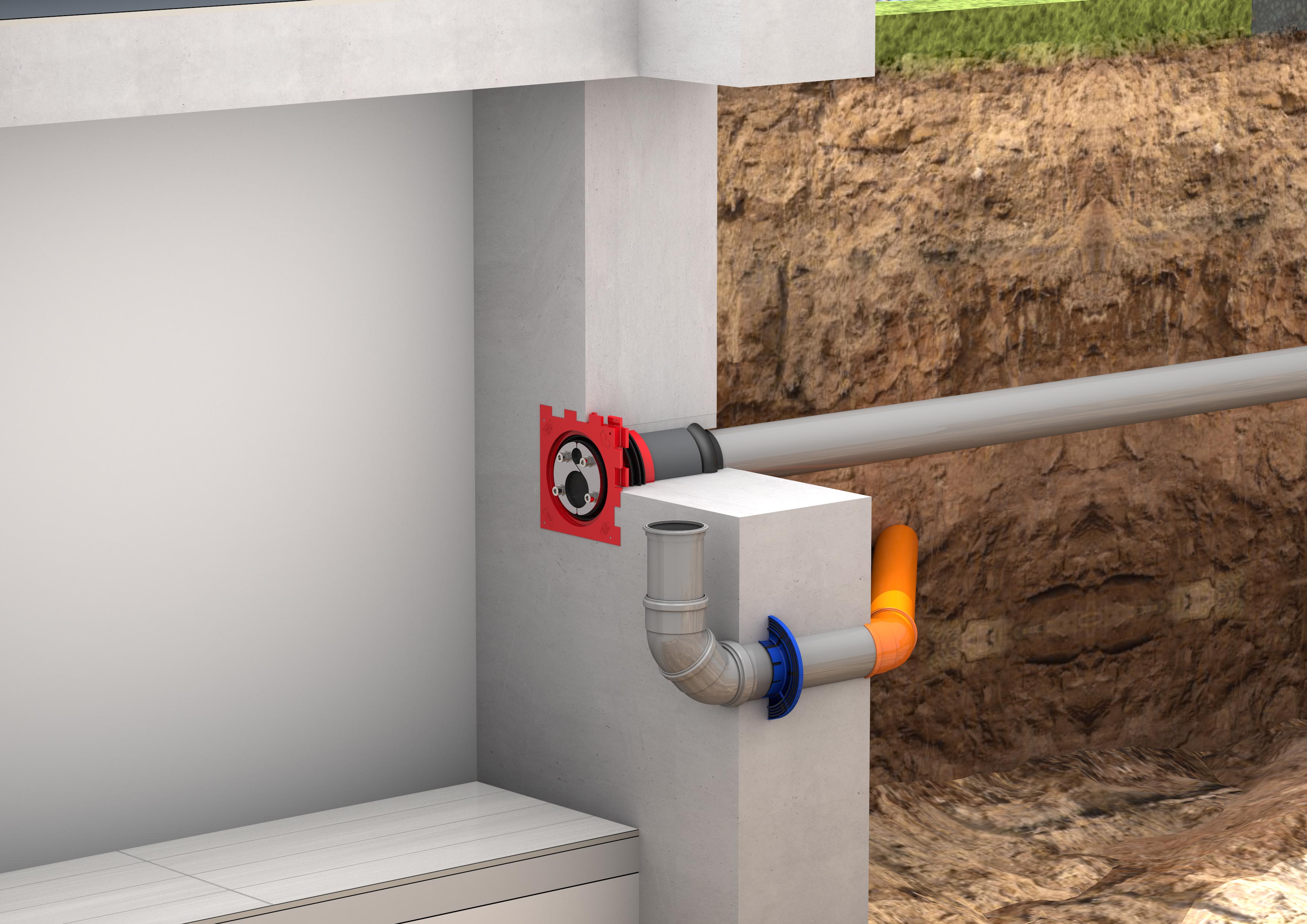Radon-safe construction.
The most important facts about radon:
- Statutory reference value for the annual average radon concentration in the air in indoor spaces and at workplaces: 300 Bq/m³
- Preventative measures against the ingress of radon into buildings should be undertaken in accordance with the general rules of technology. (*Norm SIA 180/2014: Wärmeschutz, Feuchteschutz und Raumklima in Gebäuden, Wegleitung Radon, 2019)
- The radon concentration in the soil gas may vary between regions and seasons.
- Radon experts help to determine the radon level and position the appropriate measuring devices (exposimeters). Following this they also provide assistance with defining necessary measures.
- Radon is the second most frequent cause of lung cancer after smoking.
- The radioactive noble gas blends with the ambient air outdoors and gets diluted. Therefore it is not dangerous.
- Everyday tip: Aerating thoroughly and regularly reduces the radon concentration.
(Source: Strahlenschutzverordnung (StSV))
Radon map of Switzerland
The concentrations of radioactive noble gas differs from region to region. The radon map shows the probability[%], that the Reference value of 300 Bq/m3 for radon concentration in buildings is surpassed. The map helps determine the necessity of measuring the radon level in a building. For the measurement, survey institutes authorised by the Bundesamt für Gesundheit BAG can be contacted.
Statutory reference value for the annual average radon concentration in the air in indoor spaces and at workplaces: 900,000 radon particles can enter a house at the same time through a hole the size of a pinhead.
Radon was discovered in 1900. However this noble gas has been in existence since the beginning of time.
Danger posed by rectangular recesses
Safe from radon with correct sealing
Choosing the right solutions is crucial for reliable protection when it comes to sealing supply and disposal lines. Professional solutions for entries both for supplying a building and for wastewater disposal are therefore important factors when planning and constructing a building.
Safe from radon gas and humidity with Hauff-Technik
Single wall insert with plug-in-socket
for setting in concrete and connecting smooth cable ducts
HSI150 KCHSingle wall insert with plug-in-socket
for setting in concrete and connecting smooth cable ducts
HSI90 KCHKG-FIX
the new Hauff wall collar
KGFUniversal wall entry
without hem
UDMStandard press seal
with segmented ring technology
HRD SG b40 A2/EPDM55Buildings with a basement
Radon can penetrate into a building through the smallest of cracks.
Safe from radon gas and humidity with Hauff-Technik
Single wall insert with plug-in-socket
for setting in concrete and connecting smooth cable ducts
HSI150 KCHSingle wall insert with plug-in-socket
for setting in concrete and connecting smooth cable ducts
HSI90 KCHKG-FIX
the new Hauff wall collar
KGFUniversal wall entry
without hem
UDMStandard press seal
with segmented ring technology
HRD SG b40 A2/EPDM55Tundish
AT110Certified radon protection
Our products have undergone testing and are certified as radon tight. The materials EPDM and ABS have been thoroughly studied by the Deutsche Akkreditierungsstelle (German Accreditation Body). You will find the relevant test certificates here:
Radon information to download
All data and facts on the subject of radon and radon-safe buildings can be found in brief form in our Radon booklet.


















